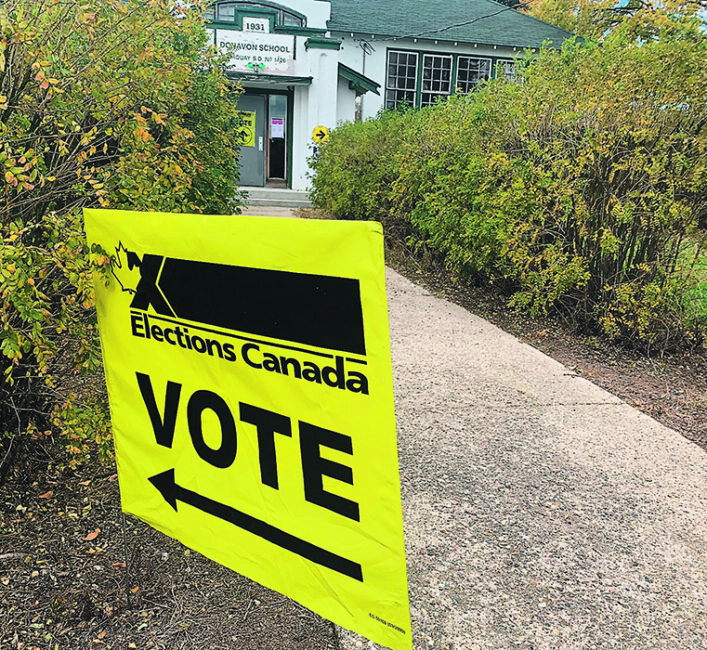Election: continuation of Liberal ag plan

Conservatives sweep all Sask. seats, Alberta moves to centre with four non-Conservatives while Manitoba holds steady
Canadian farmers should expect agriculture policy similar to the last six years after the Liberals were re-elected to a minority government Sept. 20.
Results are still not official, but the Liberals won 159 seats, the Conservatives 119, New Democrats 25, Green Party 2, and the Bloc Quebecois, 33, for a Parliament that closely resembles the one at dissolution.
Agriculture minister Marie-Claude Bibeau was re-elected and is a frontrunner to return in the portfolio.
Prairie voters opted mainly for the status quo, sending predominantly Conservative candidates to Ottawa.
There were some breakthroughs for the Liberals and New Democrats in Alberta, while all 14 Saskatchewan seats stayed Conservative and Manitoba returned 13 of its 14 incumbents in three parties. A judicial recount is underway in Charleswood-St. James-Assiniboia-Headingley where Conservative incumbent Marty Morantz was re-elected by just 24 votes.
Clark Banack, acting director of the Alberta Centre for Sustainable Rural Communities at the University of Alberta’s Augustana campus, said the results weren’t surprising in that they mirrored polling during the campaign.
Alberta elected 30 Conservatives, but Banack said the fact that voters chose two Liberals in Calgary and two New Democrats in Edmonton, up from none and one in 2019, isn’t that unusual.
Historically, between 30 and 50 percent of Albertans don’t vote Conservative, he said.
“It’s more the norm,” to have this representation, he said. “Especially in Edmonton and to a lesser extent in Calgary.”
Banack said Alberta received the most federal aid from emergency COVID-19 programs, which may have swung some votes to the Liberals. As well, the health-care crisis the province is going through due to the fourth wave of COVID probably also shifted some votes.
The Conservatives took 55 percent of the vote in Alberta, the NDP took 19 percent and the Liberals garnered 15.5 percent.
Popular vote was similar in Saskatchewan despite the Conservative sweep, at 59 percent Conservative, 21 percent NDP and 10.6 percent Liberal. Manitoba’s mix was 39 percent Conservative, 23 percent NDP and 28 percent Liberal.
Observers who expected the People’s Party of Canada, running on anti-vaccine sentiment, and the western-based Maverick Party to do better were disappointed in that neither won a seat.
But the PPC did gain popular vote over 2019 and polled better in western Canada than elsewhere.
Nationally, it had five percent of the vote; in Alberta 7.4 percent, in Saskatchewan 6.6 percent and in Manitoba 7.6 percent.
However, Banack said in some rural ridings the PPC earned as much as 15 percent and some candidates finished second. He said he thinks the numbers could have been higher.
“I think in many rural ridings, that number, whatever it was… was actually artificially lower than maybe what it could have been. I think there are maybe even higher numbers of people who are wary about vaccines and vaccine mandates, but in the end either just decided not to vote (or) in the end felt that the chance to oust Justin Trudeau was too great a chance to overlook so they ended up voting Conservative rather than PPC.”
The Maverick Party fell flat at just over one percent in Alberta and Saskatchewan and only 0.1 percent in Manitoba.
Banack said that doesn’t mean western separatist sentiment will be gone anytime soon.
“One and a half years ago I would’ve thought Maverick would win two or three seats across the Prairies,” he said. “They got washed right out by the pandemic.”
He said anti-Justin Trudeau sentiment is still running high in the West so it will be interesting to see how the Maverick Party regroups and moves ahead.
Farm organizations said it was time to refocus on agricultural issues after the campaign.
Grain Growers of Canada chair Andre Harpe said that organization made it clear to all parties that there are immediate priorities: the impact of this year’s drought, reform of business risk management programs and modernization of the Canada Grain Act.
“We expect that our federal government will prioritize Canadian agriculture on the world stage and stand up for rules-based trade,” Harpe said.
Mary Robinson, president of the Canadian Federation of Agriculture, also highlighted climate change, a labour strategy, rectifying trade disruptions and an environment policy that supports sustainable agriculture.
“Food production must be a key priority for the government, regardless of political ideology,” she said.
Source: www.producer.com

